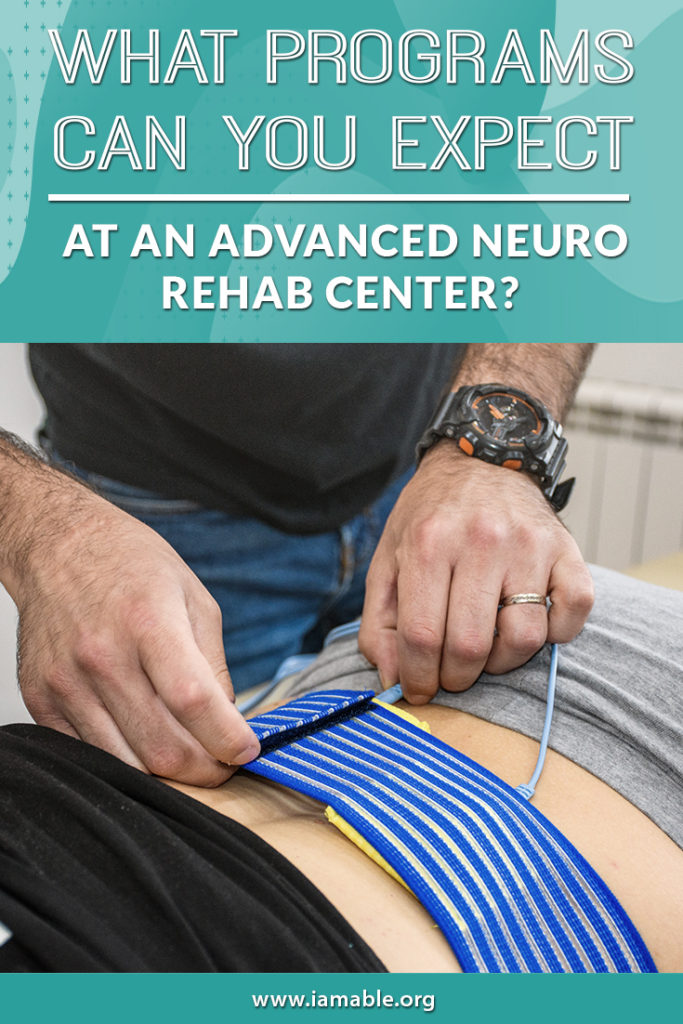Neuro rehab is a specialized type of rehabilitation that provides targeted benefits for patients who are living with nervous system disorders or injuries. The objective of getting the assistance of a neuro rehab center is to reduce the symptoms of the disease or injury, increase function, and maximize the degree of independence for the patient.
With this in mind, we will answer the following questions:
- What conditions and injury types can receive benefits from neuro rehab?
- Are there emerging therapies and technologies offered by advanced neuro rehab centers?
- What are some of the goals of neuro rehabilitation?
- How can you prepare yourself mentally for the challenges of a neurological rehabilitation journey?
Let us begin by discussing some of the health conditions that call for finding a neuro rehabilitation center.
Specialties of a Neuro Rehab Center
Dozens of injuries and diseases can cause neurological symptoms, including paralysis. What are some of these conditions?
- Spinal Cord Injuries – A complete spinal cord injury causes paralysis from the site of the damage down. There may also be a wide range of additional symptoms.
- Stroke – A stroke occurs when blood stops reaching part of the brain. As a result, those parts of the brain die, and this can lead to paralysis and many other physical and mental symptoms.
- Cerebral Palsy – This is a series of disorders that affect a part of the brain from birth or early childhood. The Symptoms include things like balance, muscle movement, and coordination complications.
- Traumatic Brain Injuries – When damage occurs to the brain due to a traumatic injury, it can instantly cause far-reaching effects. Brain injuries do not heal in the same manner as other injuries, so survivors require personalized therapy.
- Guillain-Barre Syndrome –GBS involves the immune system attacking its own peripheral nervous system and causing damage that occurs rapidly or gradually and leads to short-term or long-term paralysis.
- Muscular Dystrophy – This is a series of degenerative conditions that progressively cause muscles to weaken and atrophy. Rehabilitation may help slow the progression of the disease.
- Multiple Sclerosis –When a person has MS, the body attacks the protective sheath of the nerves, causing scar tissue and leading to neurological problems.
- Spinal Bifida – This is a hereditary condition that occurs when the spinal cord doesn’t form properly.
- Transverse Myelitis – Inflammation in the spinal cord causes neurological dysfunction, such as sensory problems and motor function issues.
- Central Cord Syndrome – This refers to an incomplete spinal cord injury. As a result, there may be some paralysis or weakness in the body below the injury. Because the neural connections are not completely severed, a higher degree of recovery is possible.
Neuro Rehabilitation Strategies and Therapies
Activity-based therapy can be essential for someone dealing with a neurological disease or recovering from a traumatic injury. What are some of the therapies you may find at an advanced rehabilitation center?
- Lokomat Therapy – This is an unweighing treadmill with an exoskeleton that can help patients of all health levels to walk with the degree of assistance required. The machine can even carry out full functions for someone who is living with paralysis. This allows the lower half of the body to get exercise, and it may even help the nervous system to search for ways to rewire in order to repeat the motions.
- Functional Electrical Stimulation (FES) – FES is another way to exercise non-functional muscles. The electrical impulses cause the muscles to contract, just as signals from the brain would. This can help with spasticity, exercise the muscles, and may even help to restore some function. FES can work in harmony with a stationary cycle or handcycle to help a paralyzed patient to get some cardiovascular exercise.
- Adaptive Gym Equipment – Adaptive equipment allows patients with reduced ability to work out safely to the degree that they are able. This exercise can help to build strength and endurance in functional muscles.
- Physical Therapy – Besides all of these advanced recovery methods, your neuro rehabilitation facility should also use traditional methods such as physical therapy and occupational therapy. Depending on your injury or disease, you may also require other interventions like speech therapy.
What are some of the goals of these different types of rehabilitation? The main objectives will depend on your specific ability and prognosis but may include:
- Maintaining or improving range of motion
- Increasing muscle strength
- Improving coordination and balance
- Gait training
- Reducing muscle spasticity
- Restoration of function
- Mitigation of symptoms
Preparing Yourself for Your Neuro Rehab Journey
One of the critical steps to ensuring that you stick with the program at your neuro rehab center is to prepare for the challenges ahead mentally. No matter how determined you are today, you need to be able to maintain that focus at times when improvement isn’t happening as fast as you would like. You also need to accept your new circumstances so that things like denial, grief, or anger don’t sap the energy you need to put into your recovery.
With this in mind, iAM ABLE offers an eBook to help you mentally prepare for your rehabilitation journey. The title is 7 Unbelievably Important Steps to Take to Thrive after Paralysis. No matter where you live, you can use this book to help get you prepared for the challenges and successes ahead. And if you live in the Miami area, iAM ABLE wants to be your neuro rehab center. Contact us today to start setting and reaching your recovery goals!
Grab our free e-book 7 Unbelievably Important Steps to Take to THRIVE after Paralysis by clicking the image below.

